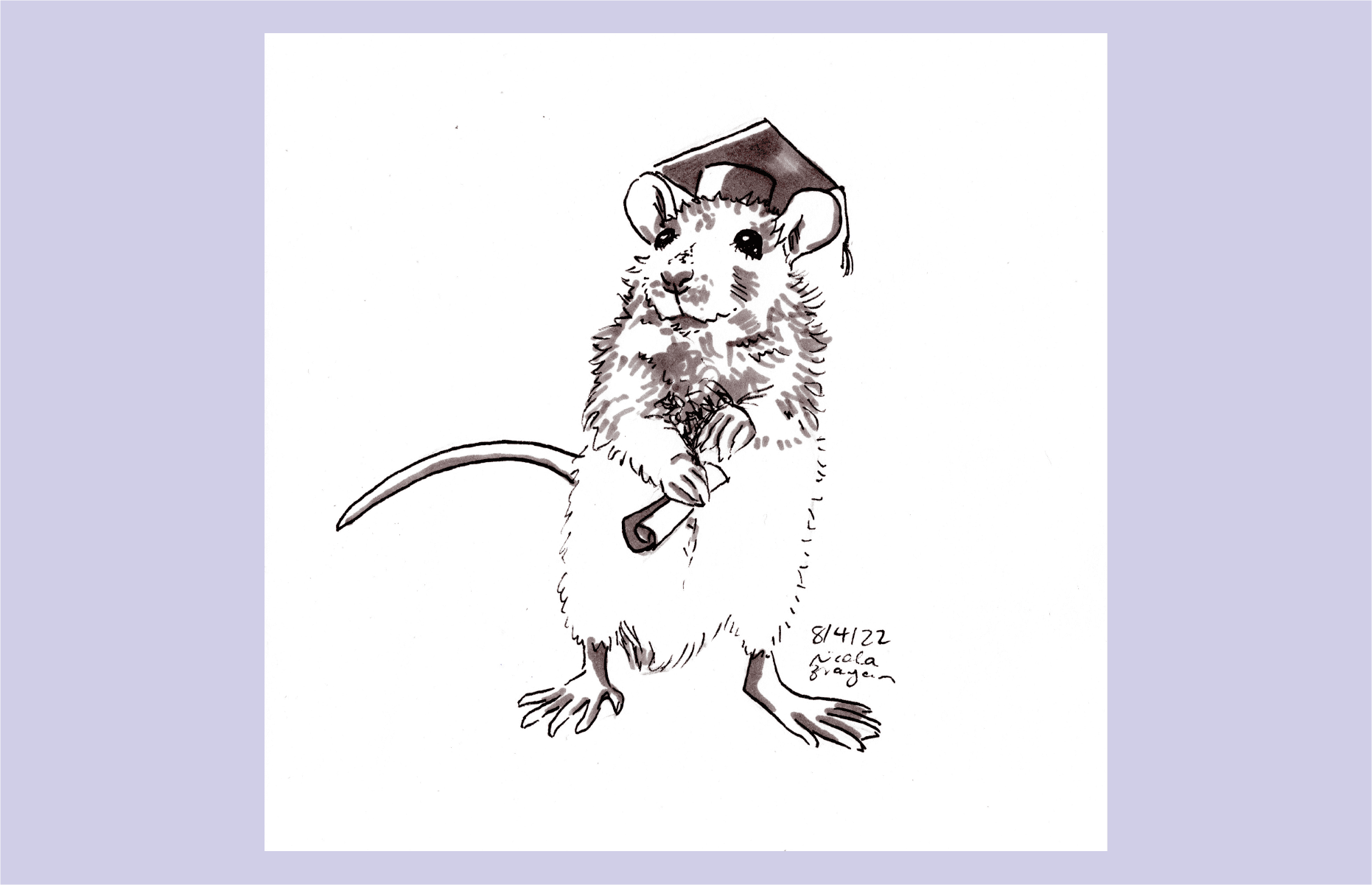If you want to study rats, you have to be prepared to crawl into places you’d rather avoid. When I took part in a research project looking at USyd’s rat population, we reached behind dumpsters, crawled underneath bushes, and became well acquainted with the dark, dirty and secluded corners of campus.
Rats have always occupied a uniquely distasteful place in our collective imagination. To a certain extent, our instinctive horror of them is justified. Globally, they cause billions of dollars worth of damage by chewing through wood and insulation, and have been known to cause fires by gnawing on wiring. They are also ‘disease sponges,’ spreading infectious agents for diseases like E. Coli and Salmonella through their blood, saliva and waste. Rats are not a glamorous topic for a research project, but for these reasons it is important that we understand them.
The species found on campus, Rattus rattus or the Black rat, is smart, adaptable, breeds at a truly staggering rate, and has become a permanent feature in Australia’s cities. They are also, as we discovered, very difficult to study.
We placed our cameras near the small, black bait boxes scattered around the USyd campus. These bait stations, which entice the rats into eating poisoned food, seemed the logical place to put them. They were specifically designed to attract as many rats as possible, and we assumed the University wouldn’t implement a dysfunctional system.
And yet, throughout the entire two week period we saw only one — albeit alarmingly large — rat, which hopped onto the bait box, turned dismissively, and scurried out of frame without even going near the trap entrance.
After two largely rat-free weeks, I was asking myself why we were bothering. But more importantly, why did the University bother with dozens of ineffective traps?
Despite our best efforts, rats are still very much a part of urban life and consistently frustrate attempts to control their population. What is it about them that makes them immune to any strategy we throw at them?
A rat’s ideal habitat
USyd isn’t the only place with a hard-to-dislodge rat population. New York, the city with the most studied rat population in the world, is home to an estimated two million rats. This is despite tens of millions of dollars worth of aggressive pest control programs implemented over the past decades.
Rats have done spectacularly well in adapting to man-made environments. They have also done so in an extraordinarily short space of time. On an evolutionary timescale, the centuries rats have taken to become at home in cities is equivalent to the blink of an eye.
The problem is that a city, or, in this case, the USyd campus, is the perfect environment for rats.
Dr Laura Grant, whose PhD examined the behaviour of urban rat populations, points out that “in urban areas, it’s always going to be pretty difficult to control the population because there’s so much rubbish and good food sources.”
The biggest contributor to their astonishing success is our behaviour. They have taken advantage of our laziness, wastefulness and inability to keep our cities clean.
“If there’s plenty of other food around, why would they risk entering the trap for the bait in there?” Grant says.
City life may also be making them smarter.
For rats, cities are a resource-rich minefield. Over the centuries, rats have rapidly evolved to live alongside their hostile human neighbours and survive our attempts to trap and poison them.
“It’s an age-old problem,” says Professor Peter Banks, who supervised our research project. “There will have been [behavioural genetic] selection for avoidance of toxic foods and there is good evidence of genetic resistance to some toxins used in other places in the world.”
The same may apply to the cognitive ability of rats, as it has with other urban species. “We’ve wanted to test this actually but haven’t done it with rats yet.”
The only effective strategy
The profession of ‘rat catcher’ was born out of a population boom of Rattus norvegicus (an even larger and fiercer species of rat) in European cities in the 19th century. Initially, rat control simply meant killing as many rats as possible. Alongside traps, rat catchers would train dogs to catch them, and even shoot them with rifles (a strange approach for densely-populated urban areas).
Rodent control has come a long way since then. Modern practices are arguably more humane and effective. The traps we use today act faster and subject the rat to as little pain as possible.
Unfortunately, in the world of pest control, old habits die hard. We only tend to think about controlling rat populations after they become a problem. By then, it is often too late.
Despite their ineffective trapping program, the University does understand the importance of being proactive. A spokesperson told Honi: “We manage our waste removal program to keep the population of rats [and other rodents] as low as [practically] possible.”
The one rat-reduction strategy we know is effective is creating a cleaner urban environment. However, it isn’t just a question of the University changing its approach. According to Peter Banks, we all have to be part of the solution: “Don’t drop food or rubbish anywhere; that’s what feeds rats and makes the baits used by pest controllers less attractive.”
Why would a rat go for a trap when we present them with an all-you-can-eat leftovers buffet?
Unfortunately, our research group had to add to that buffet to collect meaningful data. After two weeks, Professor Banks suggested we use peanut butter to attract our elusive test subjects. Very quickly, the rats learned this new food source was not dangerous and started frequenting our cameras, learning to exploit yet another opportunity provided by the students on campus.
Rather than actively catching and killing rats, our focus should be on making campus a less rat-friendly environment. Rats have become very smart — we have to be smarter.





